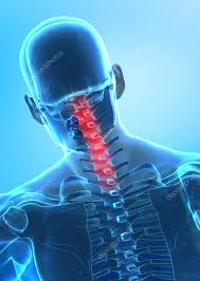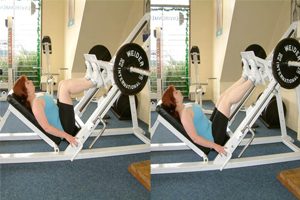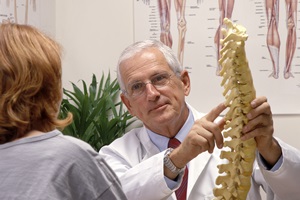Tips for a Healthy Spine

A healthy spine is an often overlooked and essential part of a healthy lifestyle. People who suffer from back pain, particularly if it is long-term, are generally less healthy than those who do not. In fact, back pain costs are staggering not only financially, but also in terms of lost time from work and because of psychosocial problems that arise during the healing process associated with long-term back pain.
Unfortunately, approximately 80-90% of the population suffers from spinal pain at some point. People who are overweight or obese, and who smoke, lift heavy objects, or had a previous episode of back pain, are more likely to experience back pain.
Because so many people suffer from spine pain, it’s important for you to try to keep your spine as healthy as possible. Following simple posture, lifting, and healthy lifestyle guidelines can help you keep your back in good shape. One of the best things you can do for your spine is to get regularly adjusted. If you are in need of an adjustment, be sure to call our office at 406-652-3553 and schedule an appointment with Dr. Oblander. In the meantime, here are some good ways to take care of your spine:
The American Chiropractic Association recommends the following spinal health tips:
Standing
• When standing, keep one foot slightly in front of the other, with your knees slightly bent. This position helps to take the pressure off your low back.
• Do not stand bent forward at the waist for prolonged periods of time. The muscles in your low back become deconditioned in this position, which may lead to pain.
Lifting
• At all times, avoid twisting while lifting. Twisting is one of the most dangerous movements for your —spine, especially while lifting.
• If the item is too heavy to lift, pushing it is easier on your back than pulling it. Whenever possible, use your legs, not your back or upper body, to push the item.
• If you must lift a heavy item, get someone to help you.
Sitting
• Keep your knees slightly higher than your hips, with your head up and back straight.
• Avoid rolling your shoulders forward (slouching).
• Try to maintain the natural curve in your low back.
Reaching and Bending
• When reaching for something above shoulder level, stand on a stool. Straining to reach such objects may
not only hurt your mid-back and neck, but it can also bring on shoulder problems.
• Do NOT bend over at the waist to pick up items from the floor or a table.
• Instead, kneel down on one knee, as close as possible to the item you are lifting, with the other foot flat on the floor and pick the item up.
• Or bend at the knees, keep the item close to your body, and lift with your legs, not your back.
Carrying
• When carrying objects, particularly if they are heavy, keep them as close to your body as possible.
• Carrying two small objects—one in each hand—is often easier to handle than one large one.
Healthy Diet and Exercise
• While the proverbial jury is still out, we suspect that extra weight puts undue strain on your spine. Keep within 10 lbs. of your ideal weight for a healthier back.
• “Beer belly” is likely the worst culprit, as it puts unwanted pressure on the muscles, ligaments and ten- dons in your low back.
• The most efficient and effective way to reduce weight is by eating a sensible diet and exercising regularly.
• Consult with your doctor before beginning any exercise program, particularly if you have a health condition.
Sleeping
• Sleeping on your back puts approximately 50 pounds of pressure on your spine. Other positions may be better
.
• Placing a pillow under your knees while lying on your
back cuts the pressure on your spine roughly in half.
• Lying on your side with a pillow between your ——– knees may also reduce the pressure on your back.
• Never sleep in a position that causes a portion of —- your spine to hurt. Most often, your body will tell you what position is best.
Quit Smoking
Smokers have more spine pain than nonsmokers, and they also heal more slowly when they have an episode of back pain because the chemicals in tobacco smoke restrict the flow of blood to the tissues in and around your spine.
While following these instructions is no guarantee that you’ll be free from back pain for your entire life, it can certainly reduce your risk of developing it. These simple steps will help you keep your spine in good shape, making you a healthier, happier person.
Lawrence H. Wyatt, DC, DACBR, FICC, Professor, Division Of Clinical Sciences, Texas Chiropractic College, Writer
Nataliya Schetchikova, PHD, Editor
This health article was shared from the following website: http://www.chiroworkscarecenter.com/documents/Articles/ACA_healthy_spine.pdf

 Most people at some point have heard cracking or grinding noises in their neck upon movement. These sounds, also called crepitus, are usually painless and typically do not represent anything serious.
Most people at some point have heard cracking or grinding noises in their neck upon movement. These sounds, also called crepitus, are usually painless and typically do not represent anything serious.




